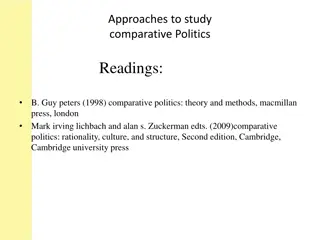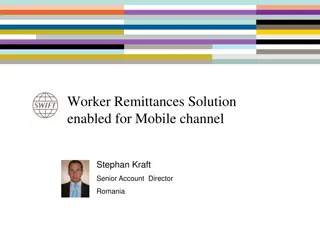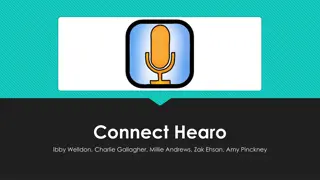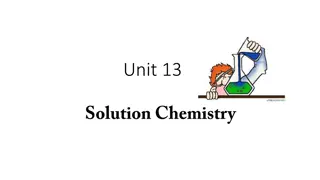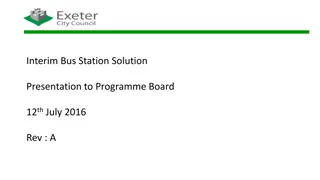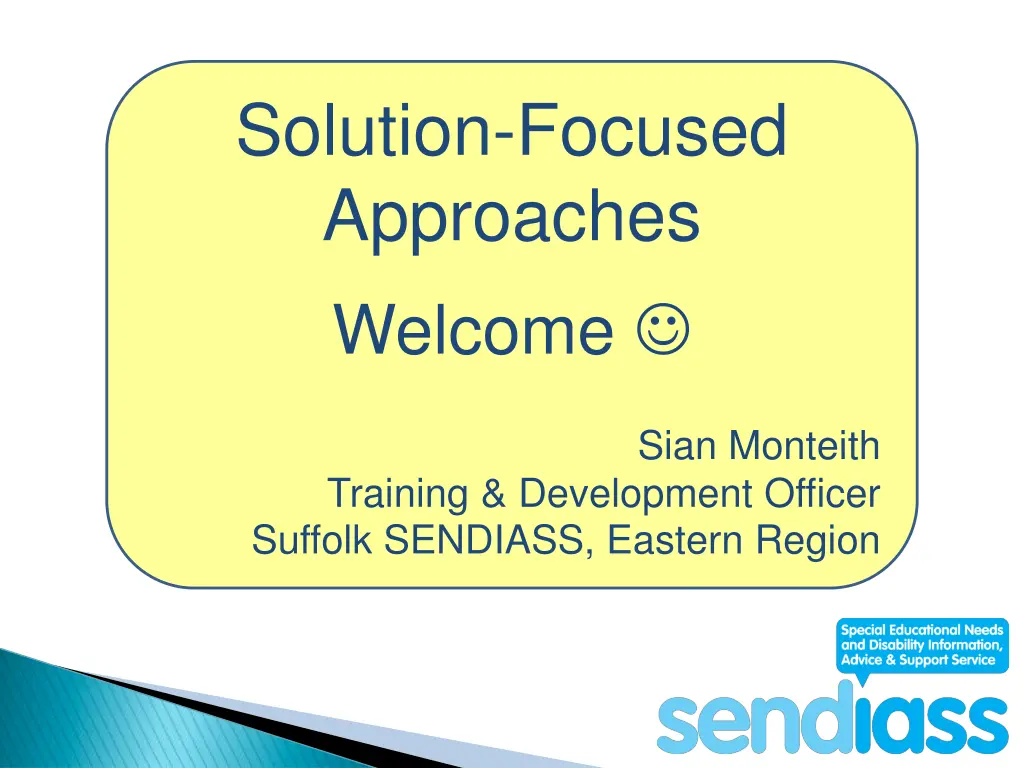
Solution-Focused Approaches & Brief Therapy Insights
Explore the essence of solution-focused approaches, delve into the principles of brief therapy, and understand the power of positive questioning techniques. Discover a shift in problem-solving perspectives towards focusing on solutions and building on strengths for positive change.
Download Presentation

Please find below an Image/Link to download the presentation.
The content on the website is provided AS IS for your information and personal use only. It may not be sold, licensed, or shared on other websites without obtaining consent from the author. If you encounter any issues during the download, it is possible that the publisher has removed the file from their server.
You are allowed to download the files provided on this website for personal or commercial use, subject to the condition that they are used lawfully. All files are the property of their respective owners.
The content on the website is provided AS IS for your information and personal use only. It may not be sold, licensed, or shared on other websites without obtaining consent from the author.
E N D
Presentation Transcript
Solution-Focused Approaches Welcome Sian Monteith Training & Development Officer Suffolk SENDIASS, Eastern Region 1
By the end of this interactive session you will: Have a better understanding of the history and thinking behind solution focused approaches Have practised some solution focussed questioning Know where to find out more about solution focussed approaches to support your work.
Knowing how I got into this situation is absolutely no help in getting me out of it!
Solution Focused Brief Therapy Milwaukee, Wisconsin Insoo Kim Berg and Steve De Shazer o Less interested in the historical causes of problems compared to what works in the present and future. o Focuses on what s already working, as the seedlings for future solutions o Investigates exceptions to the problem - the surprising instances when things go better
Were interested in the problem solved, not the problem that needs solving. Insoo Kim Berg
Solution-focused approaches look to the preferred end first. Not where from? Where to?
Small mirror looking backwards, Large windscreen looking forwards
Questioning is key Solution Focussed Problem Focussed What would you like to see change? Tell me about the problem. What are you already doing that s helpful? Is there an underlying issue? What happened in the past? How would you like it to work? What will it look like when the problem is resolved? How would you or other people be behaving?
The Basis of SF Questioning o Sees every conversation as an opportunity for positive change & provides a chance to reflect o Believes families already have resources and strengths to address problems. o Notices and reinforces these positive qualities and aims to build on these. o Helps families see what they can do rather than focussing on what they can t. o Asks questions rather than selling answers
Solution-focused Questions: Coping Question Coping questions help parents recognise their own resilience and ways they already effectively cope. How are you managing, in the face of this difficulty What did you find helpful in managing that? How have you prevented things from being worse? How did you get through that time/experience?
Exception Question These are questions which explore the parent or young person s experiences when the problem is there, and when it isn t. Tell me about the times it happens less or bothers you least? Tell me about when you felt the happiest? What was it about that day that made it a better day? What are the signs, however small, that things are starting to change?
Solution-focused meetings Solution Building Problem solving 9.30am 9.45am Problem Talk Problem Talk Solution Talk Solution talk 10:30am
Preferred Future Questioning Encourage the parent/YP to imagine a future in which the problem is not affecting their life. Activity in pairs: Suppose you go to bed tonight and wake up tomorrow on a day you are coming to work and you have your best head on.
How do you know you have your best head on? What would be different? What would people around you notice? How would others respond to you? What are you able to do today that you couldn t do yesterday? How did you feel at the end of this best head day?
What did you find out? What did it feel like to ask the questions?
Ask your partner: Activity: appreciative enquiry. What makes you a good worker/friend? What else? What might your colleagues/friends value about you? Swop roles. What else? What might your children or partner value in you? What else?
Comment on your partner s strengths and resources What did it feel like to be questioned? What did it feel like to ask the questions?
Follow up Questions What s been better since we met . . .? What did you do? What s been different? How did you do that? What have you been doing that s been good for you? In what way will that be good for you? What have you learned about yourself?
Value of focussing on positives o Focussing on the problem may not lead to the solution . Solution-focussing ensures a problem does not define the adult/child and their destiny o Not trapped in negative past. Importance of remaining open to possibility of change, to new beginnings, second chances and hope. Cultivating optimism helps protect mental health. o Positive experiences may resonate down the line o Helps build confidence and resilience under difficult circumstances and helps person recognise their own strengths.
Reflection You have 30 seconds in a lift with someone. o How will you explain what you have learnt today? o What will you tell them about what you are going to do differently?
Stay in touch with solution focused learning. You can follow BRIEF, their work and thinking, in a number of ways: o Blog: http://www.brief.org.uk/blog/ o Twitter: BRIEF@briefsolutions o Look at YouTube clips by Elliot Connie https://www.brief.org.uk
PATH is a person-centred and solution-focussed approach for planning and facilitating It starts with the preferred future and helps identify goals before looking at now .
Thank you for taking part today. We really value your feedback 23










